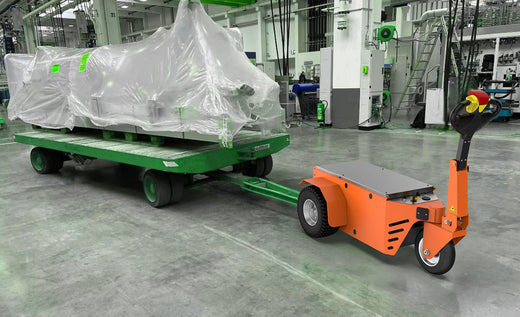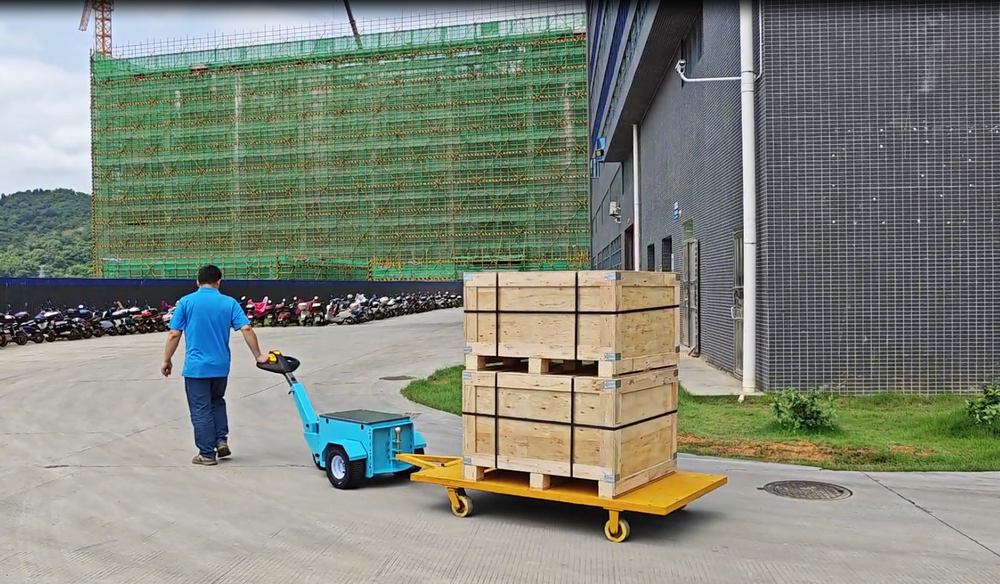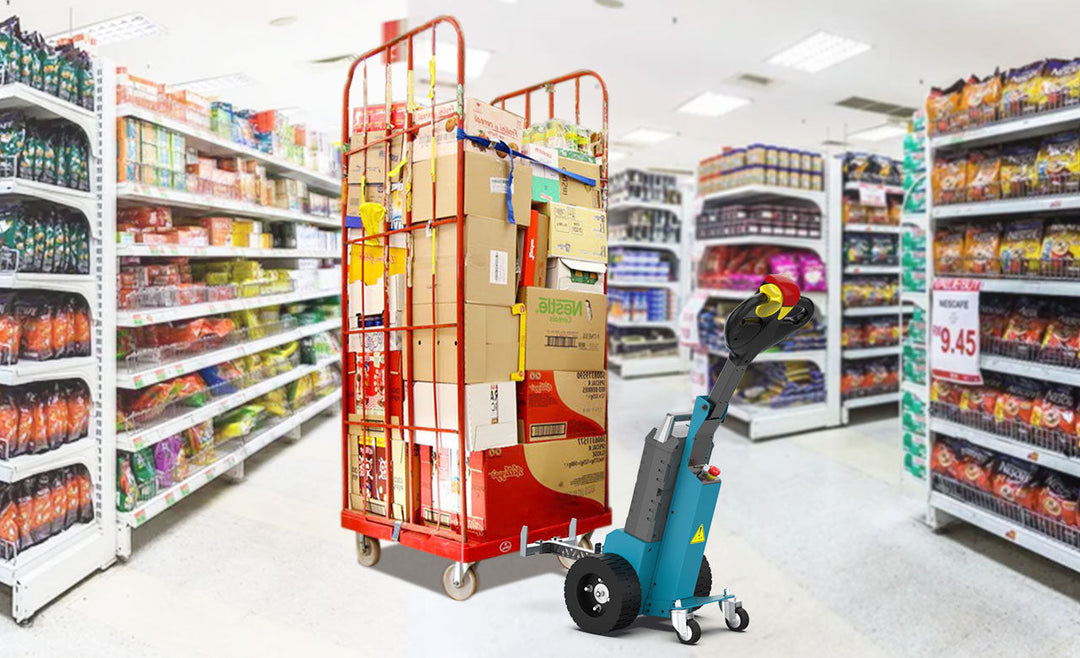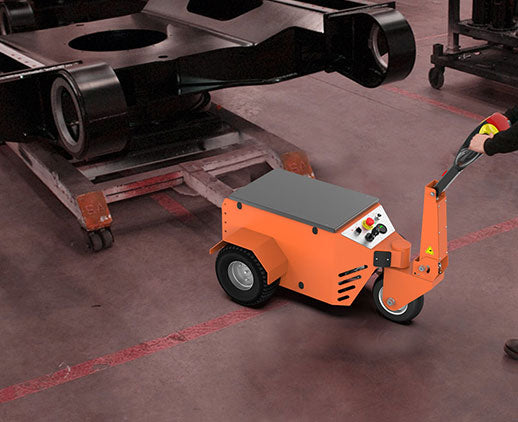How to Pick the Right Tugger Machine

The choice of the right tugger machine depends on the load capacity, power source, and operating environment. Such is the case where a 2000 kg tugger can cut maintenance by up to 25%, while electric versions save up to 30% in yearly costs. Anti-slip systems for slopes and compact designs for narrow aisles are ways to enhance efficiency.
Determine Load Capacity
Choose a device that can take up to 1000 kg cargo to make 50 cargo transfers in one day, averaging 800 kg per voyage, which is a total of 40 tons. Give an overload margin of 20%. Equipment operating within the optimum load increases efficiency by 30%, while overloading reduces its life by 50%.
Dynamic loads raise actual load up to 120%. A typical example would be when a 2000 kg tugger operates at 2400 kg loads up a 10% incline. In addition, over 70% of all tugger-related accidents can be attributed to overloading.
Take for example a 1500 kg tugger, which costs between $4,000 to $6,700. If the load-carrying capacity is increased to 3000 kg, prices have been known to go over $11,000. A higher capacity means 15% more energy consumption with performance improved by 40%.
Outdoor tuggers are generally subjected to a load-carrying capacity 30% higher. In a complicated environment, a 2500 kg tugger can attain an efficiency of 1200 kg/hour. High load tuggers would have a longevity of 10-15 years whereas the low-load tuggers would last for 5-8 years.
The hydraulic adjustment systems reduce cargo offset within 5% in high-end tuggers. Smart tuggers increased their market share to 35% in 2022. New models reduce energy consumption by 25%.
The electronics industry requires 500 kg capacity, while automotive manufacturing requires 3000 kg. A car manufacturer improved production efficiency by 20% with suitable tuggers, increasing annual output by $400,000.
Small tuggers below 1000 kg share about 40% of the market, whereas large tuggers above 3000 kg hold 30%.
To learn more about tugger machine options, explore our product page.
Consider Power Source
In 2022, electric tuggers held a market share of 52% in the world. These tuggers can run from 6-8 hours and come with power in the range of 1.5 to 3 kW. However, fuel tuggers can run up to 12-14 hours, which burns 1.5 liters every hour at the cost of $18 per day.
Diesel tuggers are 30% more powerful than others. For 3500 kg towing, the cost is $6,700 to $9,300. A diesel engine requires an annual maintenance cost of $1,400, which is 40% higher than an electric tugger.
Electric tuggers serve for 10 to 12 years while fuel models serve for 8 to 10 years. Annual maintenance costs of an electric tugger are from $280 to $420.
Hybrid tuggers save 25% in fuel. Power output is up to 4 kW. Electric models cost $6,000, the fuel models $7,300. Within five years, operating costs save 30% with electric tuggers.
China offers a 10% subsidy on electric equipment. Electric tugger sales were up 18% in 2023 while fuel model sales fell 7%.
A 2022 lithium battery technology increased the capacity by 20% and reduced the charging time to 1.5 hours. In logistics operations, such technology reduced 2 hours per day, thus saving up to $11,200 energy expenditure in a year.
To find out more about tugger applications, visit our applications page.
Check Maneuverability
Industrial tuggers have a turning radius of 1.5-2 meters. The radius for some small tuggers is less than 1 meter. One warehouse utilized a device with a 0.9-meter radius and witnessed a 20% increase in cargo handling every hour.
A standard tugger has measurements of 1.8m x 0.8m x 1.2m and weighs 500 kg. Compact models are 300 kg and 30% smaller. Lighter-weight equipment cuts down accident rates by 15%, thus reducing maintenance costs by 10%.
High-performance tuggers can reach 8 km/h. Once, a logistics company used faster tuggers and shortened daily cycles by 30 minutes, saving $16,000 per year.
Anti-slip tuggers keep 95% traction on 10% slopes, while traditional models only keep 70%. New electric tuggers adjust routes within 0.1 seconds, reducing accidents by 50%.
Multidirectional tuggers boast 360-degree rotation, increasing narrow-aisle efficiency by 30%. Units cost about $8,000, while employee training time is reduced by half.
Some tuggers operate only 4 hours on a full charge, but the high-performance ones go up to 8 hours. High-end batteries are 10% more expensive but cut backup battery requirements by 15%.
Standard tuggers need to be maintained every 200 hours, while the high-end unit could extend these cycles up to 400 hours, reducing costs by 30%.
Smart systems reduce energy use by 20%. One retail company was able to save $1,400 per month, thus reducing their payback period by six months with smart tuggers.
Low-noise tuggers (<60 dB) cost $7,300, and after the introduction of low-noise tuggers, the job satisfaction of workers increased by 15% and work efficiency increased by 10%.
Learn more about smart electric tugs on our product page.
Safety Feature Assessment
Automatic brakes kick in within 0.5 seconds. In 2022, 35% of work accidents were due to the absence of this feature. A manufacturing company reduced its accidents from 8% to 2%, saving $28,000 each year.
Standard tuggers have a 25% rollover risk on 15-degree slopes. Center-of-gravity adjustment systems reduce this to 5%. A logistics company using such tuggers reduced monthly cargo damage from 10 incidents to less than 2.
Pressure-sensing seats reduce misoperation by 90%. A food processing company eliminated weekly errors, saving $7,000 annually.
If tuggers operate over 8 km/h, accidents will increase by 50%. High-brightness LED lights reduce low-light errors by 60%. A certain mining operation reduced their vision-related accidents from 6 to 2 per month and realized savings of $21,000.
Radar-equipped tuggers detect obstacles within 3 meters and stop in 0.3 seconds. In 2023, obstacle-avoidance system sales grew by 25%.
Temperature monitors on lithium batteries prevent overheating. 80% of equipment fires in the last five years were due to overheating of the battery.
Dual control systems reduce emergency stop times to less than 1 second. A manufacturing company reduced accidents from 4% to 0.5%, saving $70,000 per year.
Fire-resistant equipment has a melting point as high as 1500°C, representing a 15% price increase. However, it will last 3 years longer and save $1,400 in maintenance cost per year.
Explore more about power tug benefits on this detailed blog.
Assess Operating Environment
If humidity exceeds 80%, failure rate rises around 35%. Upgrade to water-proof equipment; reduce the number of monthly repairs from 4 to 1 for a coastal logistics company, saving 50% annually.
The capacity of normal batteries decreases by 40% in -20°C. 15% more expensive options extend service life by 2 years, saving 30% for replacements.
Anti-slip tuggers maintain up to 90% traction on 10% slopes. Transport efficiency increased by 20% in a certain warehouse, saving $21,000 annually.
A small factory: Within a turning radius of 0.8 meters, compact tuggers developed the handling capability from 20 to 28 times per hour. Productivity increased by 15%.
HEPA-standard filters are needed for highly dusty areas. Filtration maintenance costs for a mining company were reduced by 25%, while failure rates were reduced by 40%.
The maintenance cycle of high-end tuggers is every 500 hours, while for standard models, it is every 200 hours, reducing downtime by 15% and increasing revenue by $280,000.
Low-noise tuggers increase employee satisfaction by 10% and work efficiency by 5%. LED lighting reduced errors in cold-chain logistics from 5 to 1 time per week, saving $14,000 per year.
Durable tires: Standard tires serve 1500 hours, while the durable ones serve 3000 hours, reducing downtime by 50%.
Automated lubrication systems cost $700 but cut manual maintenance work by 70%. It helps a logistics company save $8,400 labor costs every year and extend equipment lifespan by 20%.
Lithium batteries can be used for 5~7 years, while lead-acid batteries only serve for 2~3 years. Though 40% more expensive, within five years, they cut total costs by 25%.
High-efficiency filters can extend cleaning cycles from 100 to 300 hours and lower annual maintenance costs from $7,000 to $2,800.
Sensors and monitoring systems reduce maintenance cost by 20%. A logistics park reduced annual repair costs from $21,000 to $17,000, and failures were lowered by 25%.
Cooling systems with extended intervals from 50 to 200 hours reduce high-temperature failures by 40%, saving $11,200 annually.
Remote update systems reduce downtime by 36 hours per year, increasing production by $28,000 and reducing software maintenance costs by 15%.
Localized parts bring down the wait time for repairs from 15 days to 5 days, enhancing availability by 20% and raising annual output by $70,000.
Discover more about tugger pricing factors on our detailed blog.
Usage-Based Selection
The capacity for electric tuggers ranges from 500-3000 kg. Undersized equipment raises failure rates by 20%, and oversized equipment inflates costs by 15%. A logistics company once selected a 2000 kg tugger for a load of 1500 kg and reduced maintenance costs by 25%.
High-intensity environments require reinforced components, extending lifespan by 3 years and reducing maintenance by 30%.
High-speed tuggers improve transport efficiency by 30%, increasing annual output by $280,000.
Compact tuggers increase the efficiency of shelving units by 25%, saving $42,000 per year in rental cost.
Low-temperature batteries reduce losses in cargo by 10%, saving $70,000 in losses per year.
The rent for a diesel tugger is $1/hour, and an electric one is $0.40/hour. Diesel models decrease downtime by 20% in high-load conditions and increase the output by 10%.
Hydraulic lift systems decrease the operating time by 50%, with a saving of $14,000 per year for labor costs.
Automatic braking systems decrease accidents by 50%, with a saving of $42,000 in compensation.
Multifunctional devices, priced 1.3 times higher, save $70,000 every year spent on supplementary devices.
High-performance equipment lowers 5-year costs by 30%, therefore improving profit margins by 5%.
Discover how electric aircraft tugs are transforming ground handling at airports on this blog post.












